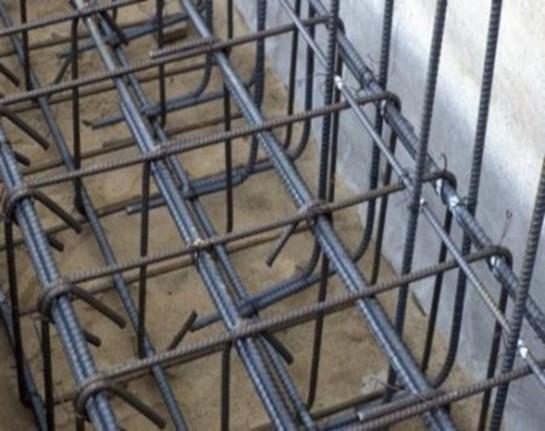
BUILDING
Foundations
Introduction
-
“The foundation of a building is that part of walls, piers and columns in
direct contact with the ground and transmitting loads to the ground.”
- Every building needs a foundation of some kind.
-
Because of the variety of soil, rock, and water conditions that are encountered below the surface of the ground and the unique demands that buildings make upon their foundations, foundation design is a highly specialized field combining aspects of geotechnical and civil engineering.
Purpose of foundation
- To distribute the load of the structure over a large bearing area so as to bring the intensity of load within the safe bearing capacity of soil.
- To load the bearing surface at a uniform rate to avoid differential settlement.
- To prevent the lateral movement of supporting material.
- To attain a level and firm bed for building operations.
- To increase the stability of the structure as a whole.

-
The size and depth of a foundation is determined by the
structure and size of a building it supports and the
nature and bearing capacity of the ground supporting it.
The importance of foundations in building constructions
-
Buildings are built for a purpose: schools for education, offices for work, theatres for culture. Each is constructed for a specific purpose behind with a specific provision of foundation.
-
Foundations do not typically contribute to the architectural aesthetics of a building. Without suitable foundations, a building will not function effectively, will be unsafe and its architectural merits will rapidly fade.
Requirements foundation
- Structural stability
- Not impairing function of the building
- Durability
-
Economy
Types of foundation
- Structural stability
-
There are two basic types of foundations
- Shallow foundation
- Deep foundation
- Shallow foundation
-
Shallow foundation
-
The foundation provided immediately below the lowest part of the structure near the ground level, transferring load directly to the supporting soil, is known as shallow foundation.
-
Shallow foundation is provided when stable soil with adequate bearing capacity occur near to the ground level.
Basic Foundation Types
-
Shallow Df/B £ 1 (after Terzaghi)
Generally Df £ 3 m
- Deep Df/B > 4+ or depth > 3 m
-
Types of Shallow foundation
-
Spread footing or open trench foundation
-
Grillage foundation
-
Inverted arch foundation
- Mat/Raft foundation
-
Spread footing
-
-
A spread footing foundation, which is typical in residential building, has a wider bottom portion than the load-bearing foundation walls it supports. This wider part “spreads” the weight of the structure over more area for greater stability.
-
These foundations are common in residential construction that includes a basement, and in many commercial structures. But for high rise buildings they are not sufficient.
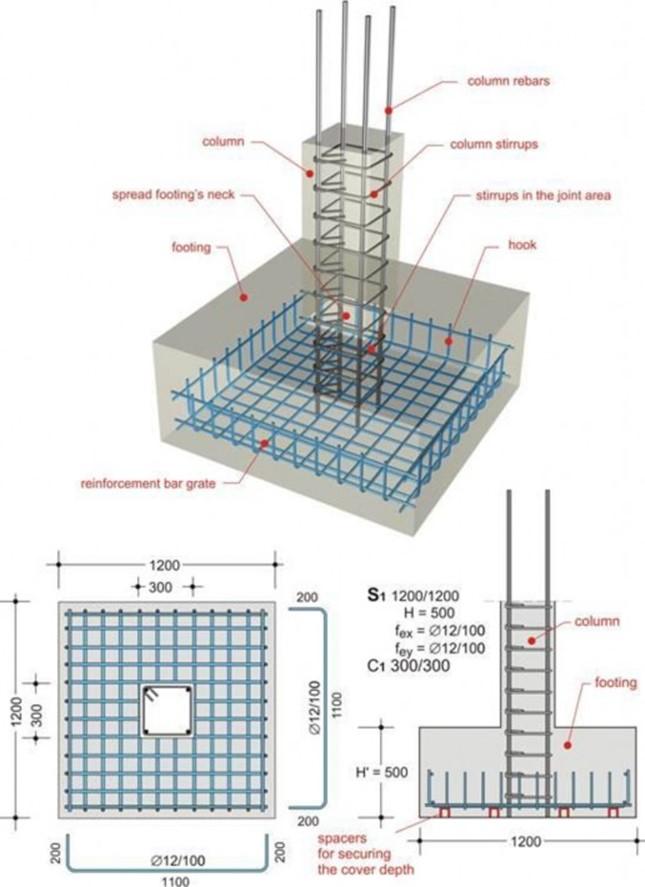
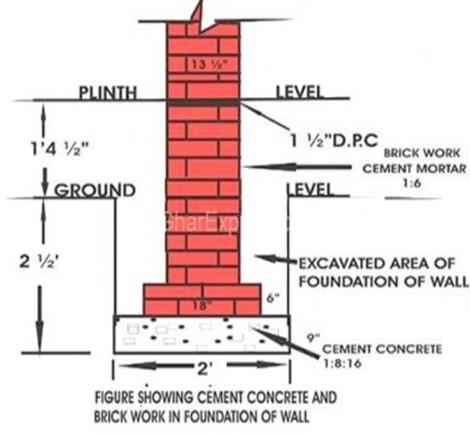

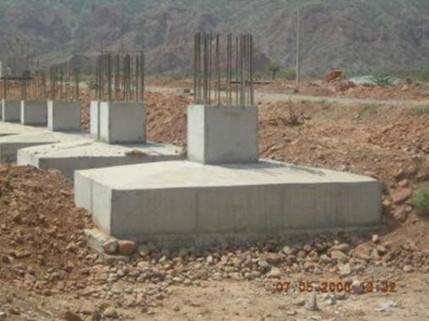
Spread footing in stone masonry
Grillage foundation

-
A type of foundation often used at the base of a column. It consists of one, two or more tiers of steel beams superimposed on a layer of concrete, adjacent tiers being placed at right angles to each other, while all tiers are encased in concrete.
-
This is dependable foundation and is used in those place where the load of the structure is pretty and bearing capacity of soil comparatively poor.
-
The grillage foundation helps in distributing the load over a wider area of subsoil.
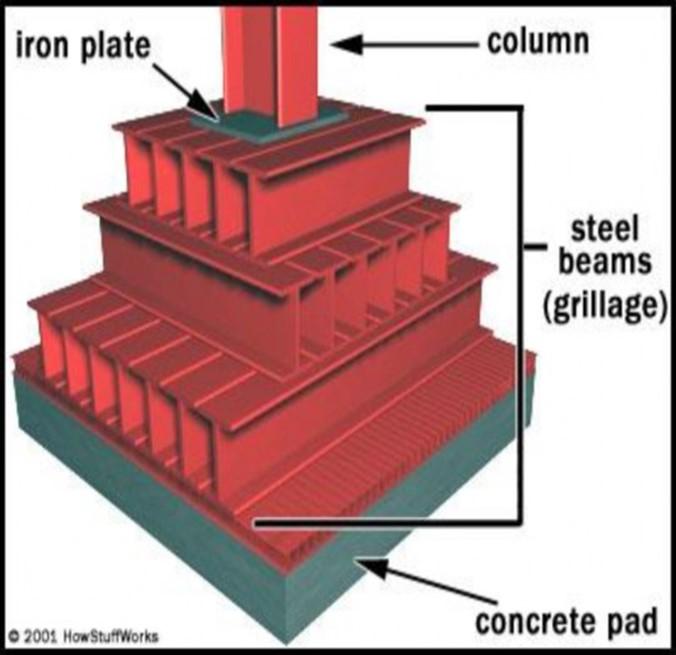
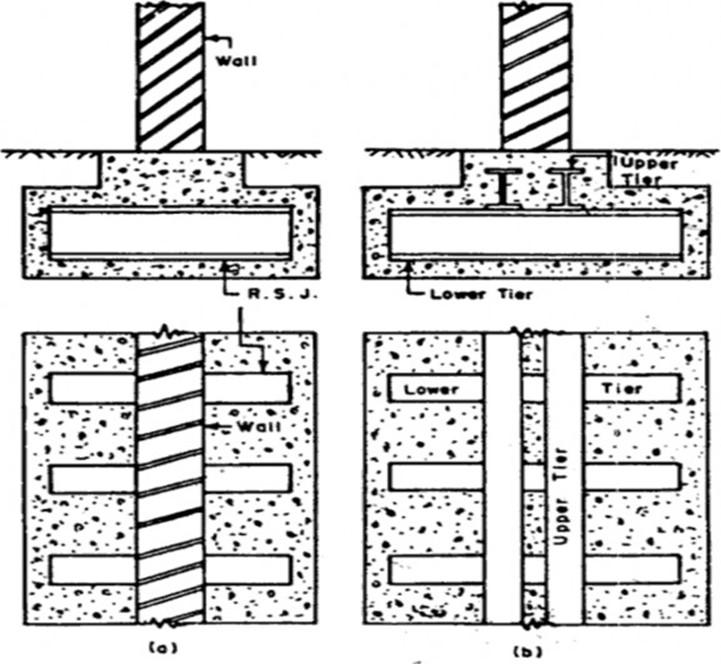
Grillage foundation
Inverted arch foundation
-
Provided for multi storyed buildings in old times.
-
However, with the advent of reinforced cement concrete construction practice, inverted arch footing is rarely done these days.

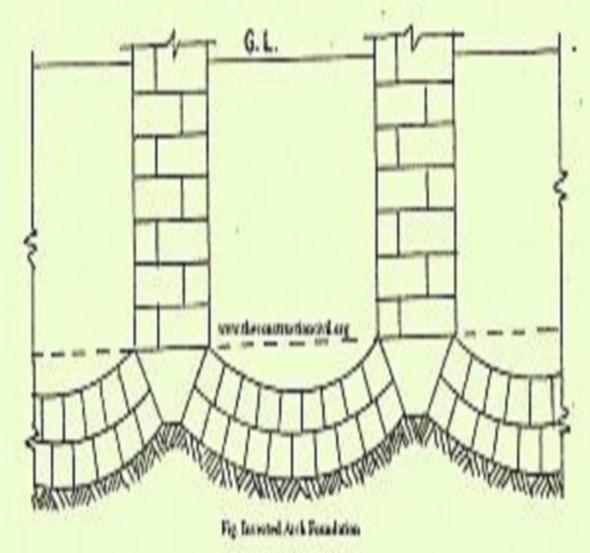
Inverted arch foundation
Mat / slab foundation
-
Mat-slab foundations, also called on-grade mat foundations, are used to distribute heavy column and wall loads across the entire building area, to lower the contact pressure compared to conventional spread footings.
-
Mat-slab foundations can be constructed near the ground surface, or at the bottom of basements.
-
In high-rise buildings, mat-slab foundations can be several meters thick, with extensive reinforcing to ensure relatively uniform load transfer and to avoid excessive settlements.


Raft foundation
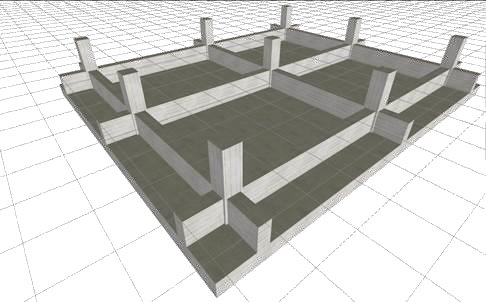


2)
Deep Foundations –
Deep foundation
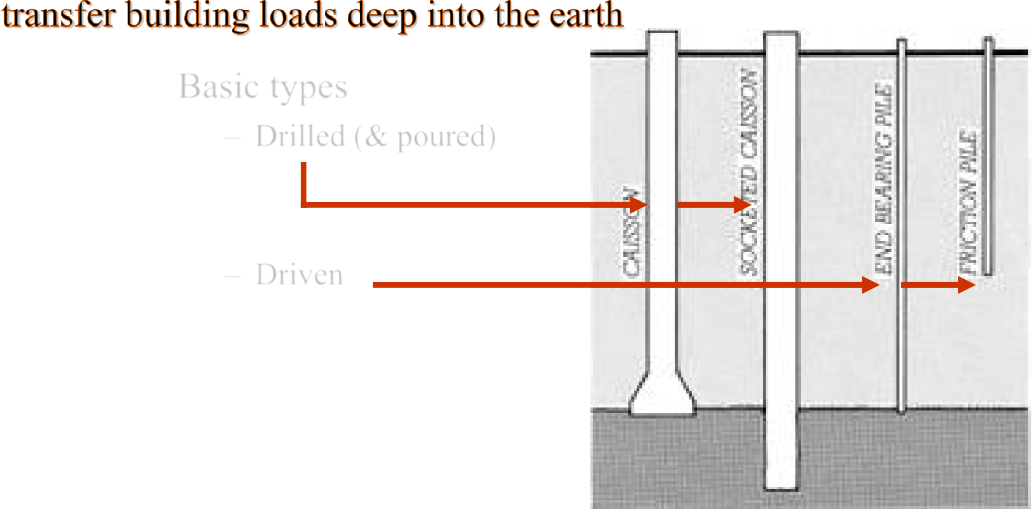
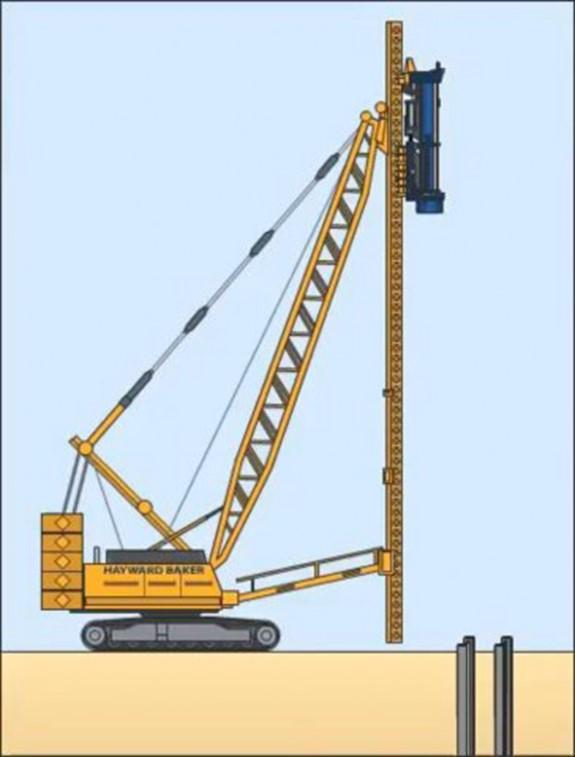

Caisson Installation Sequence
- Hole drilled with a large drill rig
- Casing installed (typically)
- Bell or Tip enlargement (optional)
- Bottom inspected and tested
- Reinforced
- Concrete placement (& casing removal)

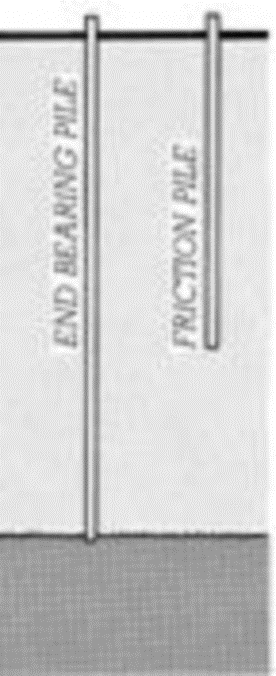


– End bearing pile – point loading
– Friction pile – load transferred by friction resistance between the pile and the earth
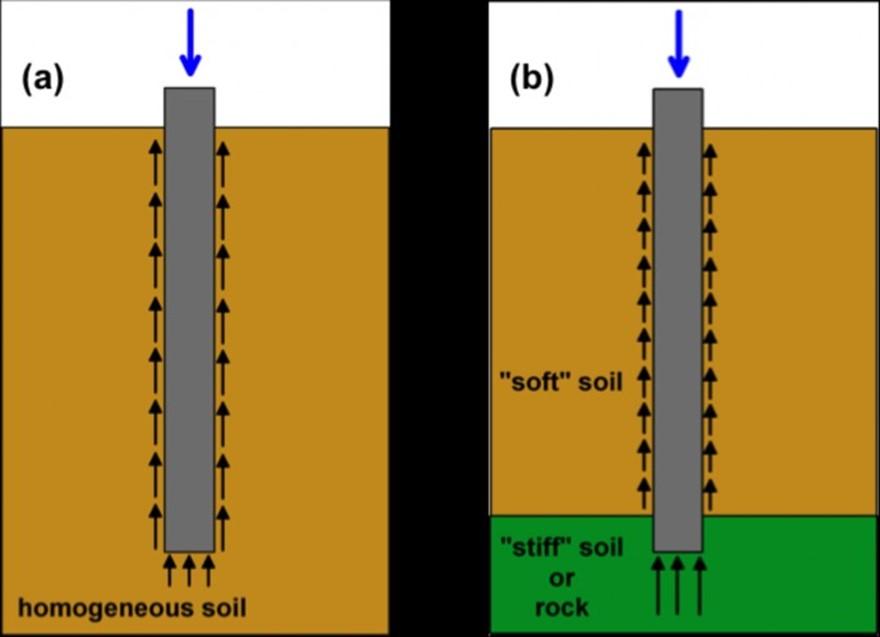
Friction pile End bearing pile
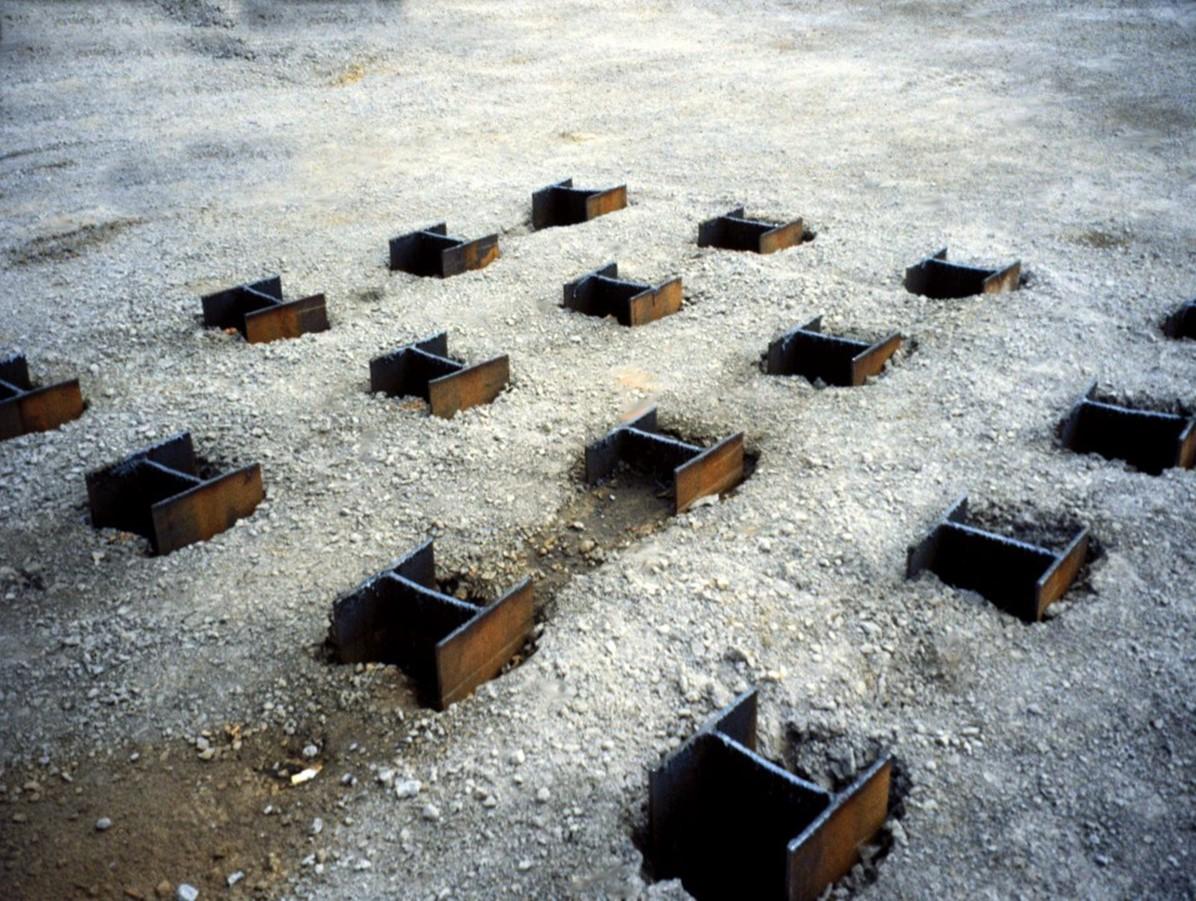
Pile material
- Steel; H- piles, Steel pipe
- Concrete; Site cast or Precast
- Wood; Timber
- Composite

Precast Concrete Plies
- Hole drilled with a large drill rig

Site Cast Concrete Piles
Cased Piles Uncased Piles
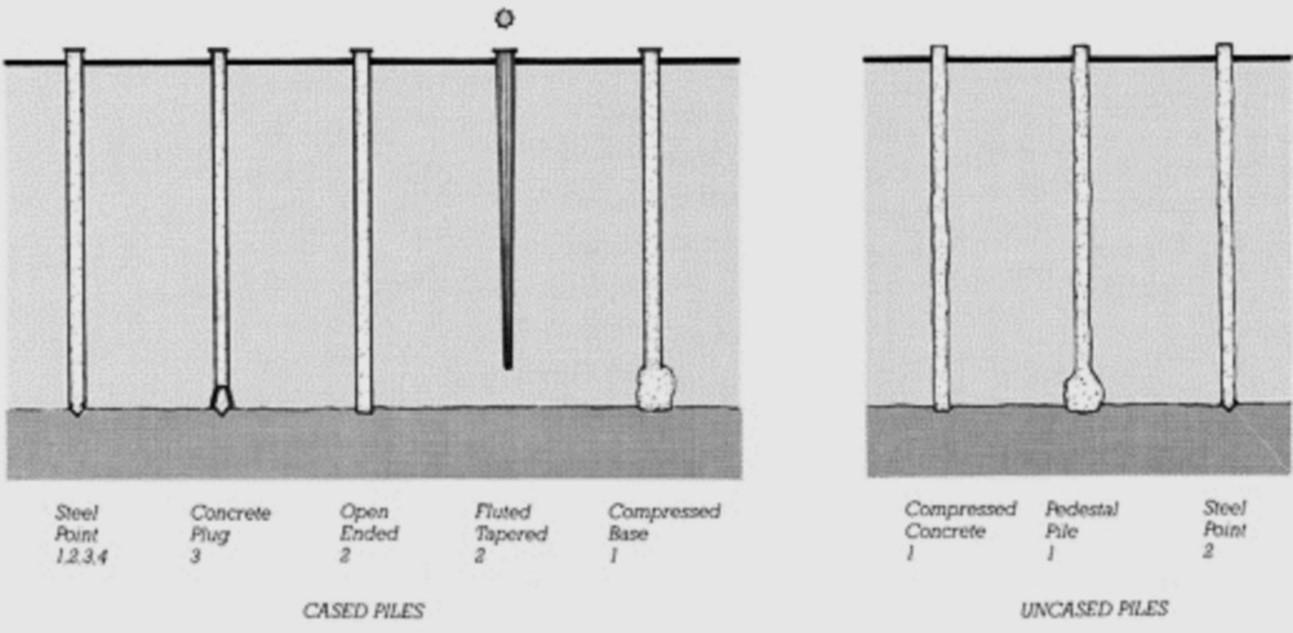

Factors affecting choice of foundation
- The type of construction.
- The magnitude of load.
- Drainage conditions.
- Feasibility in terms of available skilled labors and cost.
- The type and bearing capacity of soil.
- The seismic hazard and vulnerability of site to earthquake.
Construction of foundation
-
Construction of foundation consists upon the following activities
- Site preparation
- Site layout
- Excavation
- Pour footing
- Pour slab on grade
- Pour concrete foundation walls
Site Preparation
- Remove trees and any debris
-
Remove top soil (4-6″ below surface)
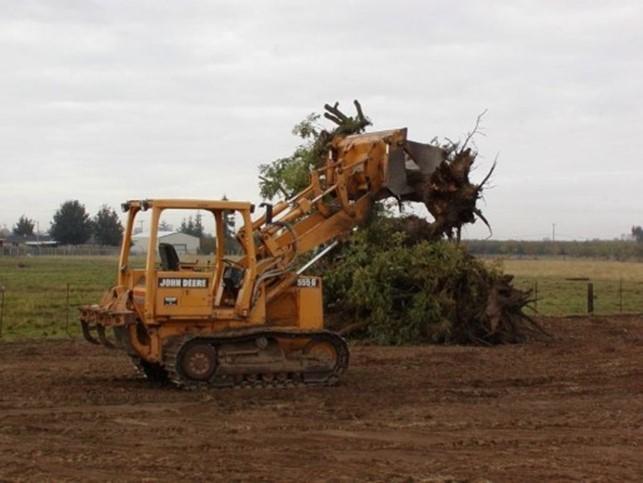
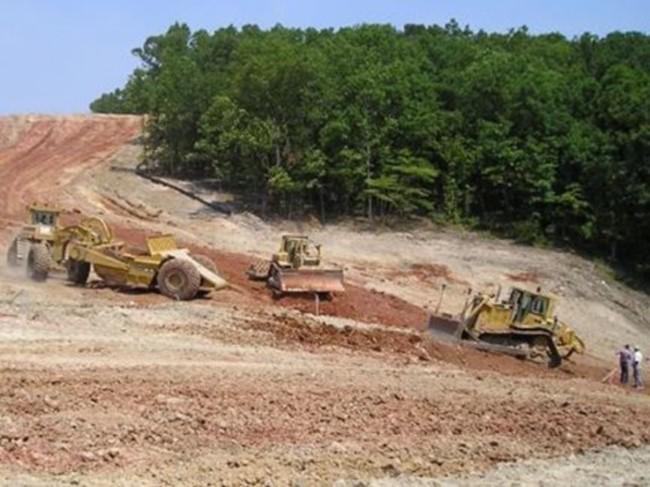
Site Layout
- Define the boundaries by using chalk powder.
- Layout building perimeter, Establish building corners & building perimeter.
-
Use surveying instruments
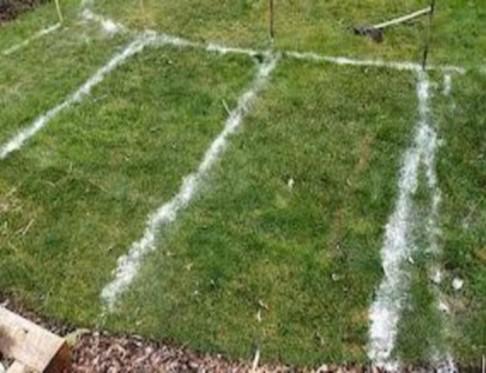

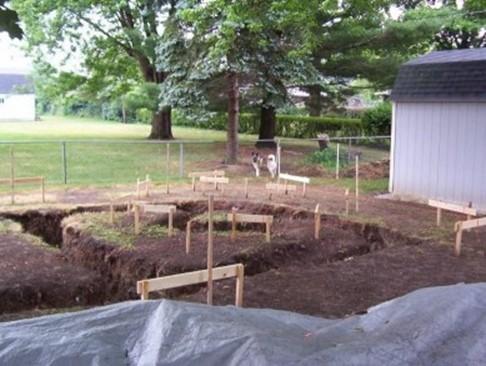
Pour Footings

- Construct formwork (if required)
- Install reinforcement (rebar) for footing.
- Pour concrete footings
- Smooth / finish surface
- Define the boundaries by using chalk powder.


Pour Slab on Grade
-
Install reinforcement (welded wire fabric)
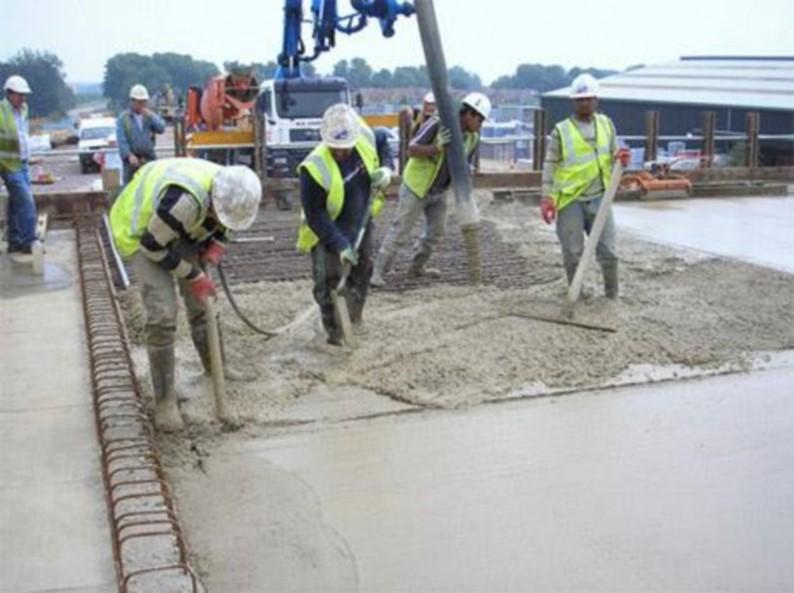
- Pour concrete slab
-
Finish slab surface
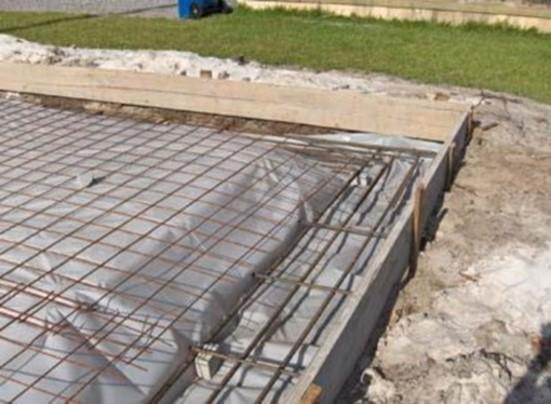

Pour Concrete Foundation Walls
- Construct formwork
- Install reinforcement into formwork
- Pour concrete foundation wall
- Install anchor bolts into semi-cured concrete
- Construct formwork

Pour Concrete Foundation Walls
- Site preparation
- Allow concrete to cure adequately (7-10 days)
- Apply waterproofing
-
Backfill

REFERENCES
- Basic Construction Training Manual for Trainers by Heini Müller
- Foundation Analysis and Design, Joseph E. Bowles, 5th ed.
THANK YOU
QUIZ






